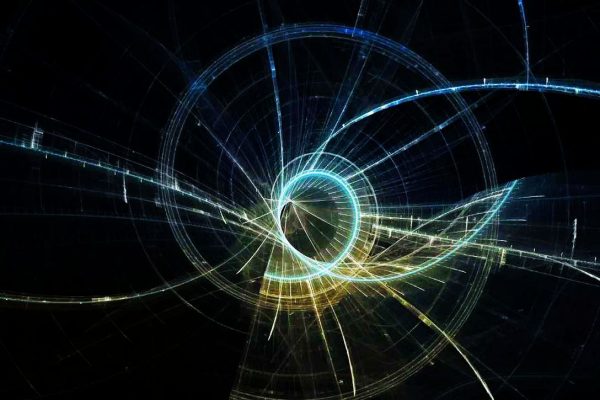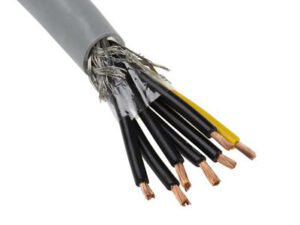

I tírdhreach ollmhór na hinnealtóireachta leictreach, seasann cáblaí ionstraimíochta mar na laochra gan moladh, tarchur gan uaim comharthaí agus sonraí atá ríthábhachtach d'fheidhmeanna tionsclaíocha éagsúla a chumasú. Na cáblaí seo, go minic dearmad, ról lárnach a imirt maidir le hiontaofacht agus cruinneas na gcóras tomhais agus rialaithe a chinntiú ar fud raidhse na dtionscal. Sa treoir chuimsitheach seo, Tugaimid isteach i saol casta na gcáblaí ionstraimíochta, iniúchadh a dhéanamh ar a gcuid samhlacha éagsúla, feidhmithe, Agus an ról fíor -riachtanach a imríonn siad san innealtóireacht nua -aimseartha.


Tá cáblaí ionstraimíochta deartha go speisialta chun comharthaí leictreacha ísealfhuinnimh a tharchur a úsáidtear chun monatóireacht agus rialú a dhéanamh ar chórais chumhachta leictreacha agus a bpróisis ghaolmhara. Murab ionann agus cáblaí cumhachta a iompraíonn sruthanna ardvoltais, Láimhseálann cáblaí ionstraimíochta comharthaí ísealvoltais le cruinneas agus iontaofacht is fearr. Déantar na cáblaí seo a innealtóireacht chun cur isteach leictreamaighnéadach a sheasamh (IEA) agus cur isteach ar mhinicíocht raidió (RFI), Sláine na gcomharthaí tarchurtha a chinntiú fiú i dtimpeallachtaí tionsclaíocha crua.
Is iad cáblaí péire casta an cineál cáblaí ionstraimíochta is coitianta, ina bhfuil dhá sheoltóir inslithe casta le chéile. Cuidíonn an chumraíocht seo le cur isteach leictreamaighnéadach a íoslaghdú, Ag déanamh iad oiriúnach do tharchur comhartha aschur agus digiteach i suíomhanna tionsclaíocha éagsúla. Tagann cáblaí péire casta i bhfoirmíochtaí éagsúla, lena n -áirítear roghanna sciath agus neamhshuimithe, solúbthacht a sholáthar chun freastal ar riachtanais shonracha iarratais.
Cuimsíonn cáblaí iolracha ilphéirí casta cuachta le chéile laistigh de sheath amháin. Tairgeann na cáblaí seo áisiúlacht ilchomharthaí a tharchur ag an am céanna, Clutter cábla a laghdú agus suiteáil a shimpliú. Is iondúil go n -úsáidtear cáblaí iolraithe i gcórais thionsclaíocha chasta ina gcaithfidh braiteoirí agus feistí rialaithe il -chumarsáid a dhéanamh le haonad rialaithe lárnach.
Cáblaí ionstraimíochta armúrtha Gné ciseal breise de armúr miotail, Cosaint mheicniúil feabhsaithe a sholáthar i gcoinne damáiste fisiciúil, cosúil le brú, tionchar a bheith agat ar, agus abrasion. Tá na cáblaí seo oiriúnach go maith do thimpeallachtaí tionsclaíocha crua ina bhfuil an baol strus meicniúil ard, iontaofacht agus marthanacht fhadtéarmach a chinntiú.
Cé nach bhfuil sé chomh forleathan le cáblaí bunaithe ar chopar, cáblaí ionstraimíochta snáthoptaice ag tarraingt ar iarratais a éilíonn tarchur sonraí ardluais thar achair fhada. Úsáideann cáblaí snáthoptaice comharthaí solais in ionad comharthaí leictreacha, Díolúine a thairiscint do chur isteach leictreamaighnéadach agus tarchur bandaleithead ard a chumasú. Tá an -tóir orthu i dtionscail ar nós teileachumarsáid, ola agus gás, agus aeraspáis, áit a bhfuil sláine agus luas sonraí ríthábhachtach.
Cruthaíonn cáblaí ionstraimíochta cnámh droma na gcóras uathoibrithe tionsclaíoch, Tarchur comharthaí idir braiteoirí a éascú, achtúirí, agus córais rialaithe. Tá na cáblaí seo lárnach do phróisis mar dhéantúsaíocht, róbaitic, agus loighistic, Sa chás go bhfuil rialú agus monatóireacht bheacht riachtanach chun táirgiúlacht agus éifeachtúlacht a bharrfheabhsú.
San earnáil ola agus gáis, Tá ról ríthábhachtach ag cáblaí ionstraimíochta sa srutha in aghaidh srutha, lár an tsrutha, agus oibríochtaí iartheachtacha. Ó chianbhraiteacht agus monatóireacht i rigí druileála agus píblínte chun córais a rialú i scaglanna agus i bplandaí peitriceimiceacha, Cumasaíonn cáblaí ionstraimíochta oibriú sábháilte agus éifeachtúil i dtimpeallachtaí dúshlánacha arb iad is sainairíonna teochtaí foircneacha iad, substaintí creimneach, agus atmaisféir ghuaiseacha.
Bíonn stáisiúin chumhachta ag brath ar cháblaí ionstraimíochta chun monatóireacht agus rialú a dhéanamh ar pharaiméadair éagsúla, Voltas san áireamh, meon, teocht, agus brú. Cumasaíonn na cáblaí seo éadáil agus aiseolas sonraí fíor-ama, An ghlúin shábháilte agus éifeachtúil a chinntiú, tras-seoladh, agus dáileadh na cumhachta leictreach trasna na greille.
Faigh cáblaí ionstraimíochta iarratais i gcórais iompair amhail iarnróid, aerfoirt, agus calafoirt, áit a n -úsáidtear iad le haghaidh comharthaíochta, rialú tráchta, agus faireachas. Tá ról ríthábhachtach acu freisin i mbonneagar criticiúil ar nós droichid, tolláin, agus dambaí, cumais monatóireachta agus rialaithe a sholáthar do shláine agus do shábháilteacht struchtúrach.
I réimse na teileachumarsáide, Feidhmíonn cáblaí ionstraimíochta mar chnámh droma an bhonneagair líonra, tarchur guth a éascú, sonraí, agus comharthaí físe thar achair fhada. Cibé acu i líonraí sreinge traidisiúnta nó i suiteálacha nua -aimseartha snáithíní snáthoptaice, Cumasaíonn na cáblaí seo nascacht gan uaim agus seirbhísí cumarsáide iontaofa do ghnólachtaí agus do thomhaltóirí araon.
Teastaíonn breithniú cúramach ar fhachtóirí éagsúla a roghnú chun an cábla ionstraimíochta cuí a roghnú le haghaidh feidhmchlár ar leith, san áireamh:
Déan an raon teochta a mheas, leibhéil taise, nochtadh ceimiceach, agus tosca comhshaoil eile chun cáblaí a roghnú le hábhair oiriúnacha agus ábhair clúdaithe atá in ann na coinníollacha atá i réim a sheasamh.
Smaoinigh ar an gcineál comharthaí atá á dtarchur, mar aschur, digiteach, nó comharthaí ardmhinicíochta, agus cáblaí a roghnú leis an bac cuí, toilleacht, agus airíonna a chosaint chun saobhadh comhartha agus cur isteach a íoslaghdú.
Socraigh an modh suiteála, cibé acu seasta nó solúbtha, laistigh nó lasmuigh, agus Roghnaigh cáblaí leis an tsolúbthacht riachtanach, Bend Ga, agus cosaint mheicniúil chun feidhmíocht iontaofa a chinntiú le linn a saol seirbhíse.
Cinntigh go gcomhlíonann na cáblaí ionstraimíochta roghnaithe caighdeáin agus rialacháin tionscail ábhartha, mar IEC, IEEE, NEC, agus OL, sábháilteacht a ráthú, iontaofacht, agus idir -inoibritheacht laistigh den iarratas atá beartaithe.
Ní fhéadfaidh cáblaí ionstraimíochta an aire a ghoid i gcónaí, Ach ní féidir a dtábhacht san innealtóireacht nua -aimseartha a shéanadh. Ó uathoibriú tionsclaíoch agus ó tháirgeadh fuinnimh go teileachumarsáid agus iompar, Is iad na cáblaí seo bunleas na gcóras agus na bpróiseas criticiúil, Cumarsáid gan uaim a chumasú, smacht, agus monatóireacht. Trí na samhlacha éagsúla a thuiscint, feidhmithe, agus critéir roghnúcháin cáblaí ionstraimíochta, Is féidir le hinnealtóirí agus gairmithe leas a bhaint as a lánacmhainneacht chun nuálaíocht a thiomáint, éifeachtúlacht, agus iontaofacht thar raon leathan tionscal.
When people hear the term mineral insulated cable, many immediately think of harsh environments like…
As telecommunication networks and power transmission systems grow rapidly, the demand for reliable and cost-effective…
In large-scale oil and gas projects, industrial cables are not just accessories—they are the "nervous…
In the world of electrical connections, cable lugs—also known as cable ears or cable terminals—a bheidh…
When choosing the right rubber cable for an electrical engineering project, it is critical to…
Comhpháirtithe agus custaiméirí a chara: 29 Eanáir, 2025 Is í an Bhliain Nua Lunar na Síne – Spring…